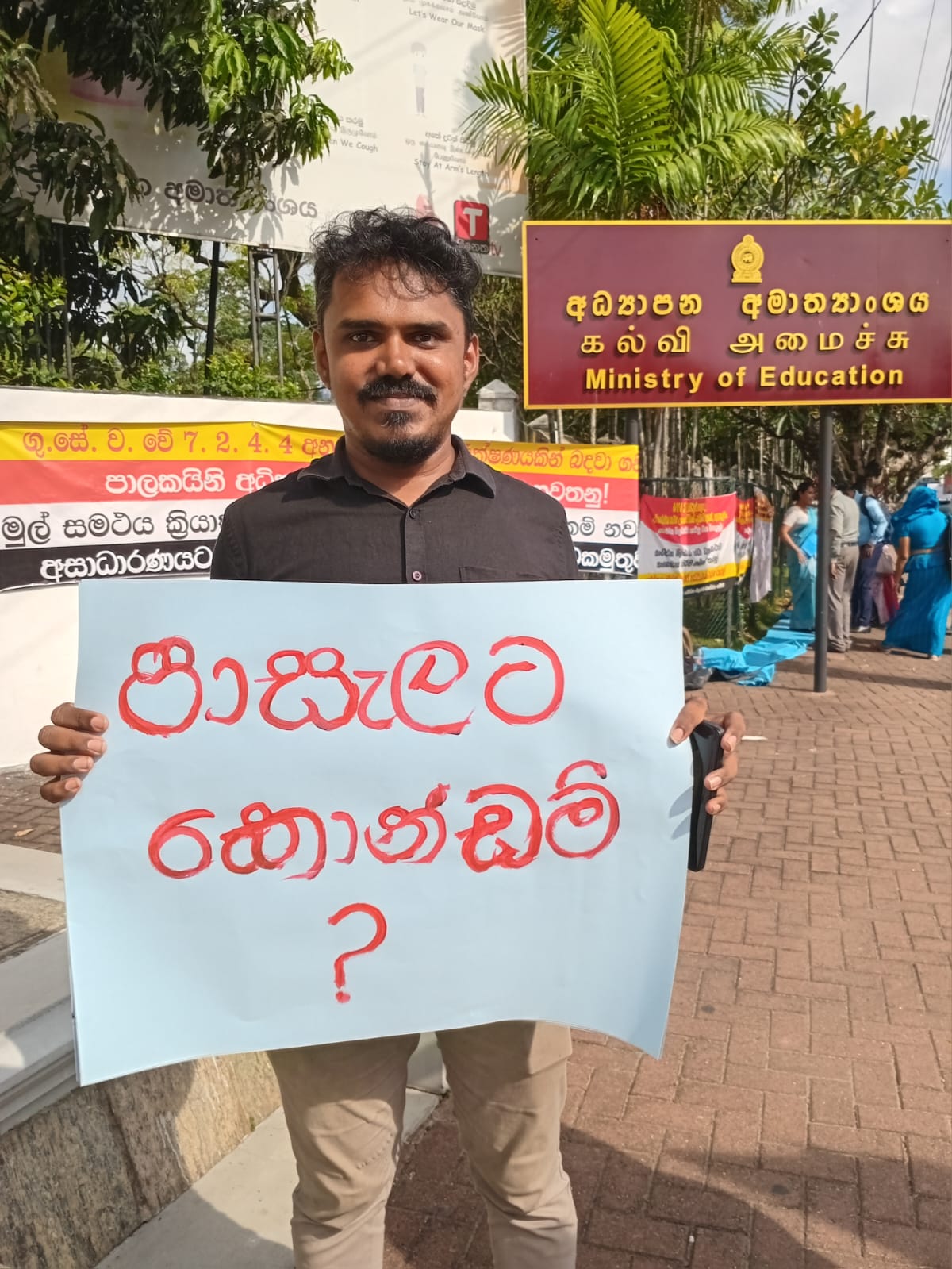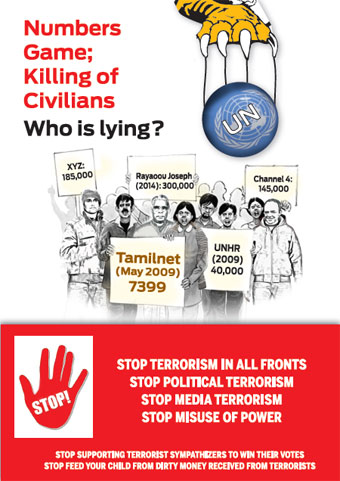The Western World: Complicity in the LTTE “Hostage” Strategy in 2008-09
By Michael Roberts
In his wide-ranging autobiographical tale of his numerous engagements in Sri Lanka and for Sri Lanka Michael Lord Naseby has condemned the LTTE for its deployment of so many Tamil civilians as a “human shield” and “bargaining counter” during the last stages of Eelam War IV in 2008/09. Let me, here, endorse the criticism and encompass the Western nations of Norway, USA, Britain and France as well as the Secretariat of the UN under Ban Ki-Moon for becoming de facto partners in this Tiger programme; while noting that several human rights agencies in the West and a few in Sri Lanka became accessories in this high level hostage enterprise.
In early 2008 the LTTE state of Thamililam faced a crunch situation because they had lost their logistical warehouse ships in the course of 2007 and they were now hemmed in from north and south by a rejuvenated body of Sri Lankan forces equipped and motivated to whittle down the Tigers’ fighting strength. As the SL Army expanded its hold on the western coast in early 2008, the LTTE induced its people to move eastwards with lock, stock and goods. This process was sustained right through that year and into 2009 when they were locked into an ever-declining pocket of land.
Concurrently, the Tigers ratcheted up their propaganda picture of “an impending humanitarian catastrophe.”
The logic was simple: as the LTTE political commissar Puleedevan informed some friends in Europe — “just as in Kosovo if enough civilians died … the world would be forced to step in” (a cat let out of the bag by Frances Harrison 2012: 63). This programme was then placed in the hands of Pirapaharan’s former colleague and master mind, KP Pathmanathan, who came out of retirement to take control of the Tiger international set-up at the end of 2008 from his locations in Thailand and Malaysia.
KP’s involvement has been lucidly set out by DBS Jeyaraj in a subsequent pamphlet. This document and Mark Salter’s aggressive book indicate that a Western-and-Tiger cabal assembled in Kuala Lumpur in February 2009 to work up plans that would enable them to engineer the rescue (i.e. the escape) of the LTTE leadership to either Eritrea, south Africa or East Timor in the course of a (so-called) humanitarian operation directed to the rescue of the Tamil civilian ‘hostages’. This cabal consisted of two Norwegian diplomats from Oslo, Torre Hattrem (the Norwegian ambassador in Colombo) and two leaders of the Global Tamil Forum, V. Rudrakumaran from New York and Jay Maheswaran from Sydney.
USA was clearly party to this project because a Pacific Air Command recce team landed in Katunayake airport in February on what was clearly a recce mission to work on the logistics of an active US intervention. Salter is quite arch in not indicating precisely when this recce team visited the island; while my inquiries in Sri Lankan have yielded limited information. Bryson Hull, the Reuters man in Colombo and an American, got a whiff of this event and was immediately summoned to the Embassy, where he discovered that the recce team had concluded that the military situation was “ä non-permissive environment” for forceful intervention – military jjargon summarizing a dangerous task and a perspective clearly guided by the memory of the debacle associated with “Black Hawk down” in Somalia a few years previously.
This caution did not prevent Robert Blake, the US ambassador in Colombo, from verbally and politely brow-beating both Foreign Minister Bogollagama and Defence Secretary Gotabaya Rajapaksa at different points of time in March and April 2009 (normally secret events known to us courtesy of Wikileaks). He demanded a stoppage of any military advances and indicated that “war crimes charges” would be the consequence arising any failure to abide by this command.
That line or pressure was supported by other parties. On 7777 March 2009 P Saravanamuttu of the CPA asked GoSL not to direct artillery fire at the territories held by the LTTE; while a whole line of UN officials turned up in Sri Lanka in the period February to April to exert pressure: Holmes in … Samaret in and Vijay Nambiar in late April 2009. Nambiar’s visit was backed up by the high-powered entry of the British and French Foreign Ministers, Miliband and Kouchner on 29/30th April 2009.
There is no better illustration of this 21st century version of gunboat diplomacy than the stern face of David Miliband throughout his visit. But he was sternly rebuked and rejected by President Rajapaksa …. and the combined forces of the Sri Lankan Army, Navy and Air Force went on with their jobs and overwhelmed the LTTE in a series of operations.
This success should not blind us to the intent and machinations of the Western consortium. Fortunately. Daya Gamage has unearthed the thoughts of an American Under-Secretary of State, one Michael Owens, to guide us in comprehending the reasoning behind the desire to rescue the LTTE leadership. At a “special media briefing 06 May 2009,” Owens indicated that USA was attempting to secure a surrender of arms by the LTTE in return for “a limited amnesty;” while grappling with the knotty question of what to do with the Tiger leadership.
This disclosure has to be set alongside the evidence unfolded so clearly by KP: the Tiger leaders were seeking a safe haven for themselves; while Pulidevan’s assertion indicates that the Tamil people were manipulated towards that end – with the humanitarian impulse of the West as one target of appeal. The manner in which Eelam stalwarts in the Catholic church, such as Bishop Rayappu, and so many members of the Tamil intelligentsia spread across the globe, supported this callous project from 2008 right through to the climax is a tragic tale.
But we also know that the West and its interests are not purely set by a warm heart. Strategic interests in the Indian Ocean must surely have guided these incoherent and bumbling American-Norwegian-Western endeavours to save the LTTE leadership.
KEY TEXTS
Gamage, Daya 2014 “The American Agenda for Sri Lanka’s National Issues, 1970s-2014,” 5 July 2014, https://thuppahi.wordpress.com/2014/07/05/the-american-agenda-for-sri-lankas-national-issues-1970s-2014/
Jeyaraj, D. B. S. 2011 “KP’ Speaks Out. An Interview with Former Tiger Chief, Vavuniya: NERDO.
Roberts, Michael 2014 “Generating Calamity, 2008-2014: An Overview of Tamil Nationalist Operations and Their Marvels,” 10 April 2014,http://groundviews.org/2014/04/10/generating-calamity-2008-2014-an-overview-of-tamil-nationalist-operations-and-their-marvels/
Roberts, Michael 2016 “Saving Talaivar Pirapäharan,” 6 April 2016, https://thuppahi.wordpress.com/2016/04/06/saving-talaivar-pirapaharan/
Salter, Mark 2015 To End a Civil War. Norway’s Peace Engagement in Sri Lanka, London: Hurst & Company.
90 Viewers








